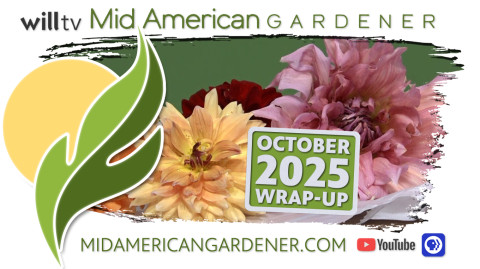Back to School: Autumn Planting with Martie and Jen
Jen and Martie are back in the studio this week, and they bring us “back to school” with whiteboards and all to answer your questions and demonstrate best practices when it comes to autumn perennial planting.
Martie came prepared with her whiteboard and created some fabulous drawings to illustrate how to properly dig a hole when planting your perennials, whether that be a tree, mum, perennial vegetables, herbs, and more: early September is the perfect time to plant!
Martie’s Hole Digging & Fall Planting Tips:
- 1. Dig a hole that is as deep as the container of your plant, but twice as wide.
- 2. Loosen and tease the roots with your trowel; keep your root ball intact, but loosen the soil on the bottom.
- 3. Add just a little bit of compost to your hole, if possible.
- 4. After placing your plant, mound dirt up just a little (2 inches max) around the base of the plant.
- 5. Add mulch (but remember Sarah Vogel’s tip, “Bagel not muffin!”
- 6. For watering: just a pencil sized trickle, and let it run for 30 minutes.
If you don’t dig a hole properly, especially in the fall, your plant may “heave.” This is when your plant roots don’t meld with the surrounding soil before the first freeze. Water in the soil pushes your plant up and out of its hole. You’ll have a sad plant by the time the snow melts, but if you follow Martie’s tips, your plant should anchor itself and be happy and healthy when spring comes around again.
Jen is doing some digging, too, with her students. They are taking advantage of the UIUC greenhouse to do some fall gardening. When planting carrot seeds in particular, Jen recommends using a pelleted seed variety, since traditional carrot seeds are just too tiny and are often over planted. Pelleted seeds are coated in a clay or water soluble solution that makes the seed easier to handle and space out without wasting as much seed. The only downside? They cost almost twice as much, but she notes that it is much less work overall.
We wrap up the show this week by answering your questions about treating Red Oak Trees, caring for a Pawpaw Tree, and how to replace a blue spruce while considering soil acidity.

If you have questions (Be sure to send photos if you have them!), we’ve got you covered. Send questions to yourgarden@gmail.com, or check out our Facebook page and feel free to leave your questions there! We will try to get it answered on an upcoming show or web segment!
Plus, you can follow us on Instagram for more exciting content!



